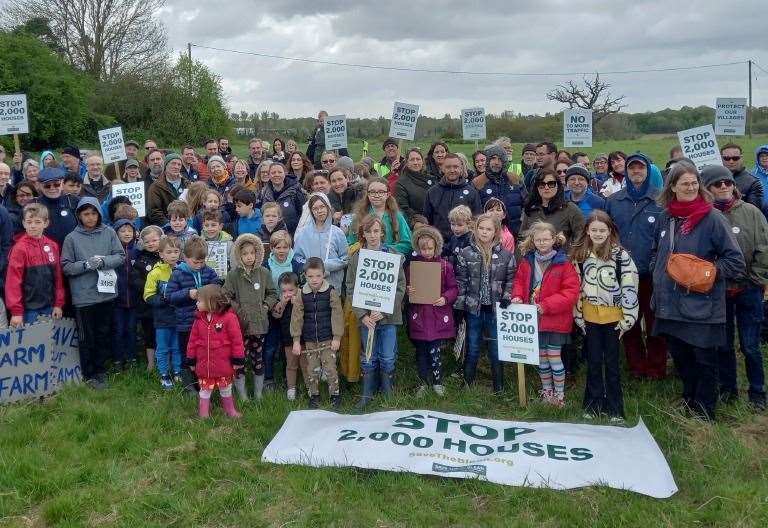More than a hundred protestors gathered to criticise plans for a 2,000-home “new settlement” which they believe will “destroy” three villages.
Canterbury City Council (CCC) is currently consulting residents on its local plan – which governs housebuilding in the district up until 2040.
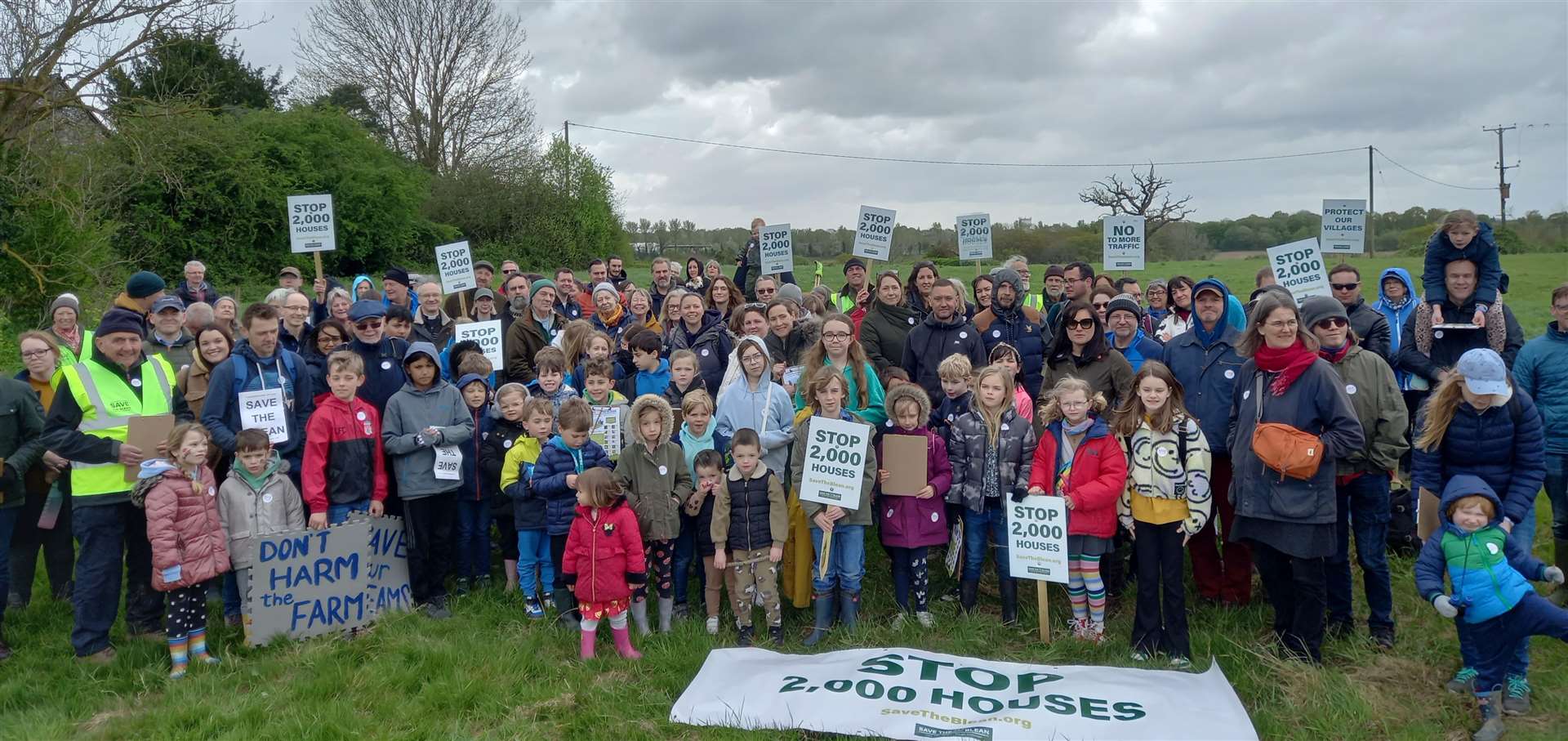
The authority must build more than 9,000 homes averaging 1,149 a year.
To help meet its quota, the council is proposing a whole “new settlement” of 2,000 homes on land north of the University of Kent, proposed by the university to CCC for development.
On Saturday April 20, scores of villagers marched across the fields on the outskirts of Canterbury to protest the plans, organised by the Save the Blean campaign.
The city council’s new draft local plan proposes building the estate between Tyler Hill, Rough Common and.Blean.
Speaking from the march, organiser Suzanne Wyatt said: “Today we’ve done a walk the Blean as part of our campaign to try and show people the impact that a 2000 house settlement would have on this beautiful area.”
The retired teacher, who has lived in Tyler Hill for seven years, said: “The whole idea of a settlement here is ludicrous,” fearing harm to local birds and other wildlife.
“We are three independent and very beautiful little villages and it would just ruin the whole atmosphere of that.
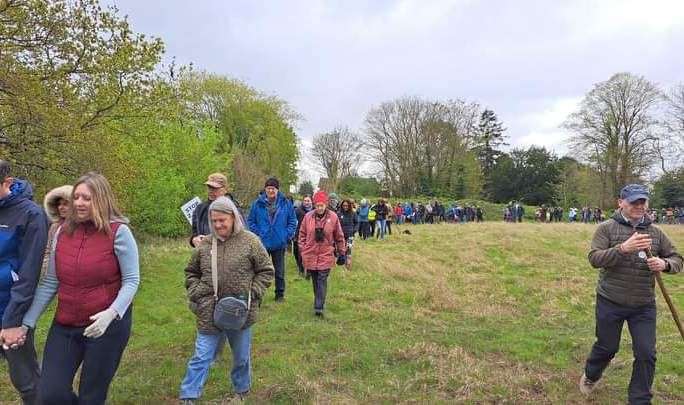
“We need houses but we need them in the right places,” she added.
Asked where a more suitable site for the homes could be, she said: “I don’t know, that’s something for the council to find out – it’s difficult to say don’t put them here, I understand that, but there are too many of them.
“We haven’t made the case for the fact that Canterbury needs more houses or more people.”
“The University of Kent (UoK) management team should be ashamed of themselves,” added fellow Save the Blean organiser Julia Kirby-Smith.
“We sympathise with the university’s need to pay off debts, but not at the cost of everyone else around them.
“Building houses and offices would be a short-term fix with permanent consequences for everyone except the University – they would be destroying farmland, woodland, biodiversity, heritage sites, and three local communities of Rough Common, Tyler Hill and Blean.”
In CCC documents, the university’s planning agents Avison Young mention “significant economic pressures” the institution is facing.
“There is an unignorable economic need for the Sites to be delivered, to ensure the future success of the University and to ensure that its significant contribution to Canterbury’s economy is sustained,” Avison Young write.
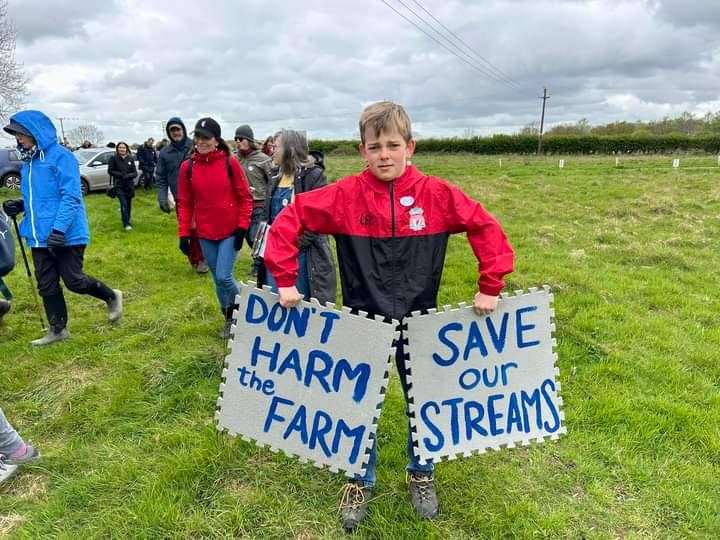
The University is facing a deficit of £31 million.
UoK has been mired in controversy of late – announcing in March plans to axe six courses in the face of protests from students and a 15,000 strong petition to rethink the move.
A spokesman for the University of Kent said: “These plans are driven by our objective of delivering long-term economic, social and environmental benefit to future students and the wider community.
“Through the breadth of what we do the University makes a significant economic impact across the county, with the total footprint of staff, student and wider activity in the region of approximately £800m per annum.
“As well as supporting the new homes that Canterbury needs for current and future generations, the proposed plans will raise necessary capital to bolster our role as an education institution and maintain inward investment in the region in the face of significant sector financial challenge.
“This in turn puts money in the pockets of local businesses, partners and communities.”
The 2,000 homes make up more than a fifth of the 9,346 included in the latest version of the draft local plan.
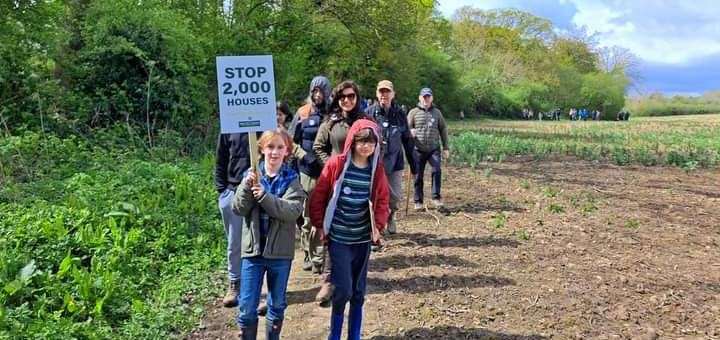
It also proposes a new primary school and a replacement for the existing Blean Primary School.
The proposal for the “new settlement” was previously pilloried at a meeting of Hackington Parish Council in March.
Chairwoman of the parish council Ania Bobrowicz told the meeting “To say that we are dismayed by these plans is probably an understatement.”
She also confirmed that representatives of Avison Young had emailed offering presentations to locals on the possibilities for the new development.
Local authorities must have local plans in place to govern housebuilding and business development over a long period of time.
If they don’t have an approved local plan, councils are put into a “state of presumption in favour of sustainable development” – meaning they have to approve development in areas which they would actually prefer to refuse.
At the parish council meeting in March, Cllr Alex Ricketts (Lib Dem), who is in the cabinet and represents the area, told villagers: “These targets have always been advisory, but try to not meet them and they will be imposed on you.”
The UK government’s official target is 300,000 new houses built per year across the country.
CCC’s consultation on the plan will end on June 3.
The council will then alter some of the plans accordingly, undertake a second consultation, and then send all of the responses and the final version of the plan to the government’s Planning Inspectorate.
The Inspectorate will analyse the plans to see if they’re workable, and the council needs to send them off to the government by June 30 2025.



